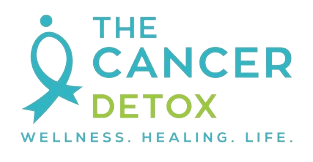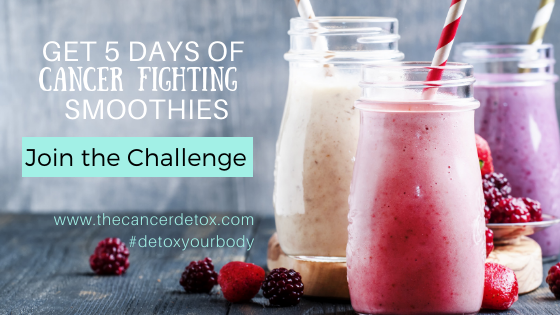Breast Cancer Prevention – Lower your risk by 15% or more with cruciferous vegetables
FAST-FACTS FROM THIS ARTICLE: Eating 1 – 2 cups of cruciferous vegetables a day may lower your breast cancer risk by 15% or more (read more…)
DOWNLOAD FREE STUFF: If you’ve ever gone to the doctor and said “this time I will ask lots of important questions about my health,” then this post is for you. Download the 5 Day Cancer-Fighting Smoothie Challenge so you can start eating (or rather drinking) more fruits and vegetables today. The next time your doctor asks “do you have any questions,” ask their opinion about the role nutrition plays in cancer prevention, including the info presented below: breast cancer prevention by eating more cruciferous vegetables.
Breast Cancer Burden
It is estimated that there were 2.1 million newly diagnosed breast cancer cases globally in 2018 [1]. In North America, it is the second leading cause of death, preceded only by lung cancer [1]. Genetics plays a role in only 5 – 10% of breast cancer cases (e.g. most often due to mutations in the genes BRCA1 and BRCA2) [1]. The known risk factors for increased risk of breast cancer include:
- Menstruation – at an early age or late age of menopause
- Reproduction – less children, no children
- Hormone intake from the environment – birth control, hormone replacement therapy
- Nutrition – alcohol intake, red meat
- Weight – weight gain, body fat distribution
The side effects from breast cancer treatment last for at least a year after treatment ends, and may lower the quality of life for women who have to deal with these lasting effects. In addition, medical care costs are high for managing these side effects. With a rate of 1 in 4 women getting breast cancer, all women should be focused on breast cancer prevention [1].
What are Cruciferous Vegetables?
Cruciferous vegetables are known as the cabbage- or mustard-family group of vegetables, and include broccoli, cabbage and kale, to name a few (see full list below). They are a healthy food choice and considered cancer-fighting foods that are inexpensive can be stored a long time in their raw state, and have minimal side effects (e.g. the exception is that in some people it can negatively effect the thyroid gland). They contain a natural chemical known as glucosinolates. This chemical gives these vegetables a spicy kick. They also contain another beneficial chemical called sulfur, which is also found in the anticancer spices garlic and onions.
Cruciferous Vegetables Reduces Breast Cancer Risk
Cruciferous vegetables reduces breast cancer risk in both pre-menopausal and post-menopausal women.
- 43% Reduction of Breast Cancer in African American’s: A diet high in cruciferous vegetables lowered the risk of aggressive breast cancer (triple negative) in Black women. A total of 59,000 African American women were asked about their general health and food intake every two years beginning in 1995. Women who ate 2 or more servings of vegetables every day lowered their risk of aggressive triple negative breast cancer by 43%. One serving of vegetables a day lowered risk by 21%. Individual cruciferous vegetables had an impact as well:
- Collard greens, eaten 3 or more times a week, reduced the risk of breast cancer by 19%
- Broccoli eaten 3 or more times a week reduced risk of breast cancer by 13%
- Green and red cabbage reduced risk by 13% in pre-menopausal women. For Black women who were post-menopausal, green and red cabbage reduced risk by 20%
- Honorable mention goes to spinach, which is not a cruciferous vegetable, however eating it frequently reduced risk by 22% [2]
- Less Breast Cancer in Chinese Women: The Shanghai Breast Cancer Study showed that turnips significantly lowered the risk of breast cancer by 19% for pre-menopausal women. Post-menopausal women had a 35% lower risk of developing this disease by eating this food. Chinese cabbage, or Napa cabbage, reduced the risk by 24%. The authors noted that turnips and Chinese cabbage are heavily consumed in this population of women, and they tend to eat these foods in their raw, uncooked state [3].
22 Cruciferous Vegetables
You will not have any problem finding the following cruciferous vegetables at your local grocery store or farmer’s market:
- Broccoli
- Broccoli sprouts
- Cabbage
- Brussel sprouts
- Cauliflower
- Daikon (Japanese radish)
- Daikon sprouts
- Garden cress
- Kale
- Rapeseed
- Wasabi
- White mustard
- Yellow mustard
- Bok choy
- Arugula (rocket salad)
- Collard greens
- Horseradish
- Kohlrabi
- Radish
- Rutabaga/turnip
- Watercress
- Mustard greens
Benefits of Cruciferous Vegetables
There are thousands of research studies on the health benefits of cruciferous vegetables, especially in the prevention of diabetes, heart disease, Alzheimer’s and cancer. These vegetables have a direct effect on your DNA. They can alter genes that are involved in cancer promotion by turning them off (e.g. HDACs or histone deacetylases, which promote cancer cell growth).
The chemicals that are contained in cruciferous vegetables are what makes them a healthy food group and a cancer-fighting powerhouse. Glucosinolates is a natural chemical found in these vegetables known to promote health. When you chew these vegetables, this chemical is converted into other important cancer fighting chemicals known as sulforaphane and indole-3-carbinol.
The benefits of these vegetables on human health and cancer prevention include the following:
- Increases detoxification of cancer-causing chemicals (ie. through phase 2 enzymes) by eating broccoli and broccoli sprouts
- Increased killing of cancer cells
- Lowering sickle cell anemia and hypertension, diseases prevalent in African-American and Hispanic communities, by eating high amounts of yams and cassava
- Inhibiting the expansion and growth of cancer cells (known as “proliferation”)
- Inhibiting the growth of new blood vessels to the growing tumor (known as “angiogenesis”)
- Stopping the spread of cancer, known as metastasis
- Decreases a type of estrogen that increases breast cancer risk (e.g. 16 alpha hydroxyestrone)
- Increasing antioxidants in the body to reduce oxidative stress
About The Cancer Detox
Our mission is to significantly improve the survival outcomes of cancer patients and survivors, and educate everyone about natural ways to reduce cancer risk and prevent its recurrence. Our Scientists and Health Coaches help relieve the overwhelmed feeling cancer patients have by showing them how to take control of their treatment process by being an engaged patient and using natural strategies to cope with treatment side effects. Our premier course is The Cancer Detox Prevention program, which guides you through 24 strategies to reduce cancer risk and prevent its recurrence and includes 60+ page ebook plus 4 audio guides you can listen to anywhere. Click the logo below for more information.
References:
- Bray F, et al. Global cancer statistics 2018: GLOBOCAN estimates of incidence and mortality worldwide for 36 cancers in 185 countries. CA Cancer J Clin. 2018;68:394-424.
- Boggs DA, et al. Fruit and vegetable intake in relation to breast cancer in the Black Women’s Health study. Am J Epidemiol. 2010;172:1268-1279
- Lee SA, et al. Cruciferous vegetables, the GSTP1 Ile105Val genetic polymorphism, and breast cancer risk. Am J Clin Nutrition. 2008;87:753-760




